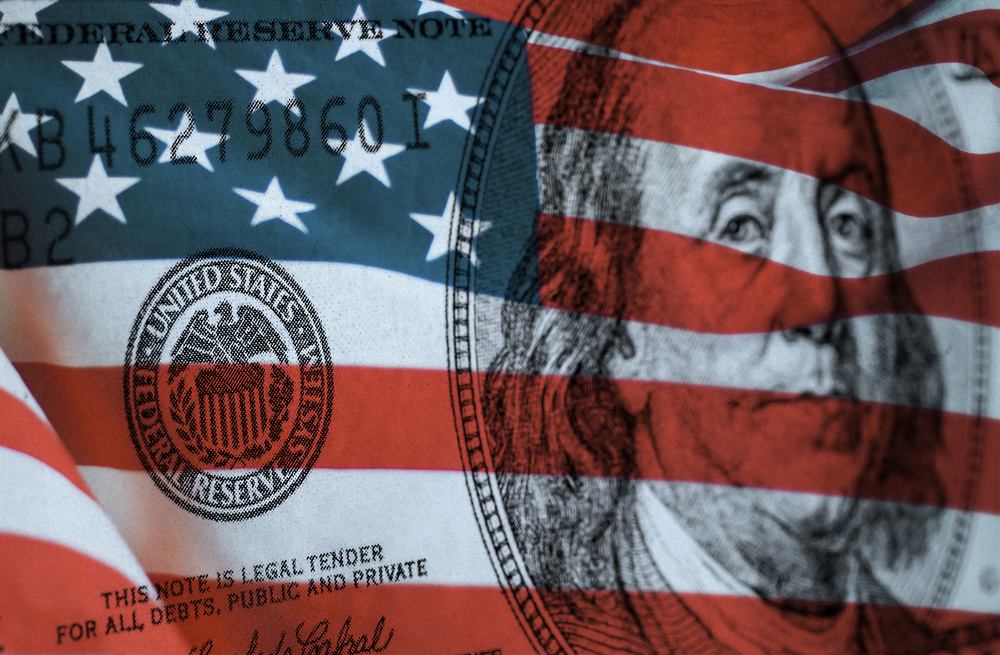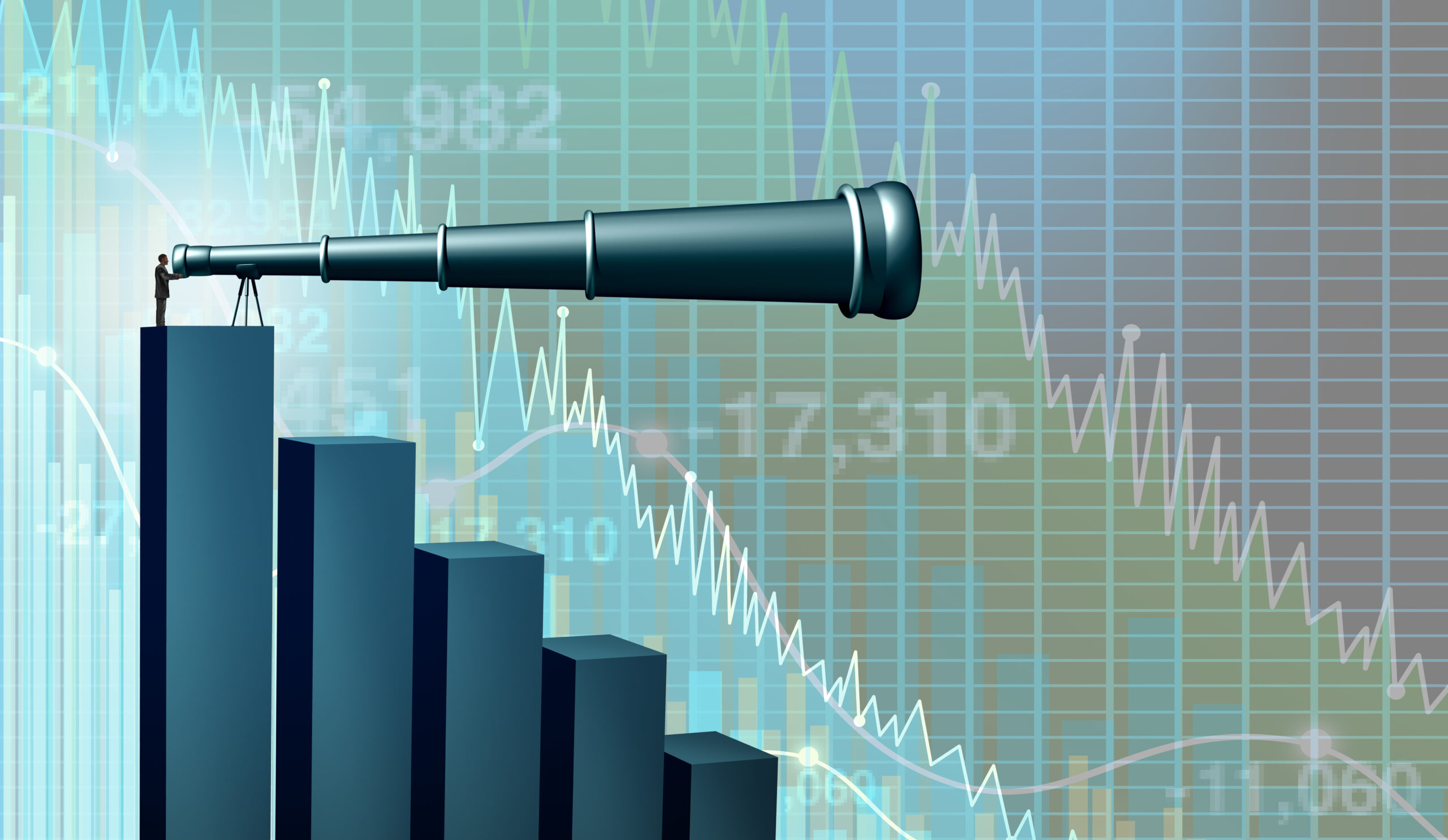Economy
No Near-term Recession Says Leading Forecast; Supercharged Consumers will Propel U.S. Economy into 2023

Recession Potential Will Grow If Federal Reserve Tightens To Control Inflation… But The Sooner The Better; California On Verge of Recovering All Jobs Lost To Pandemic
Despite real signs of stress in parts of the system, for now, consumers will carry the U.S. economy through this year and into 2023 without a downturn, according to Beacon Economics‘ latest outlook for the United States and California. The wealth created by the excessive fiscal stimulus enacted in 2020 and 2021 continues to drive a consumer consumption binge and the new forecast anticipates economic growth to look better in the second half of 2022 (when final numbers are available) than it did in the first half.
Inflation will continue to run hot, and interest rates will continue to rise as a result, but those circumstances are not recession causing, according to the outlook. Instead, expect a slow pace of overall economic growth, with weaker numbers from the more rate sensitive sectors.
“Functionally speaking, policymakers went from maximum acceleration – the stimulus – to maximum braking – tightening by the Fed – over a single year, something that would create turbulence in even the healthiest economy,” said Christopher Thornberg, Founding Partner of Beacon Economics and one of the forecast authors. “But in the near-term, while parts of the economy will remain cool due to rising interest rates, that supercharged U.S. consumer, armed with a $30 trillion increase in household wealth over the pandemic period, will keep momentum going.”
The new forecast also argues that inflation may have peaked but will not decelerate rapidly. “Until the Fed gets serious about tightening, that is reducing the money supply and raising interest rates, expect price growth to remain elevated,” said Thornberg.
Although the potential for a real recession in the nation will increase if and when the Fed applies more aggressive quantitative tightening to control inflation and push up real (rather than nominal) interest rates, the faster the Fed acts the better in order to prevent a truly deep negative business cycle, according to the forecast.
Starting in 2023, if Fed action is inadequate the United States may be looking at 3 or more years of very weak growth, with consumers in a relatively poor financial position at the end. If the Fed stamps out inflation in the near-term by aggressively reducing its balance sheet, it will drive up interest rates, cool financial markets sharply, and possibly create a modest recession next year led by consumer cutbacks. However, the nation would come out of it with a strong private sector.
In California, the state is on the brink of a milestone: recovering all the jobs it lost during the pandemic-driven downturn. While many states have already reached full recovery, as of this writing, California still has a 73,000 job deficit. However, if the economy adds the same number of jobs as it did in the latest numbers in the next data release, the state’s job count will be above water.
“California’s labor force contracted during the pandemic and employers have struggled to hire the workers they need, especially in coastal communities,” said Taner Osman, Research Manager at Beacon Economics and one of the forecast authors. “These difficulties circle directly back to the long-term affordability crisis facing the state as the labor forces in more expensive coastal areas have declined while they have grown in relatively affordable inland communities.”
View the new The Beacon Outlook including full forecast tables here.
Business
Economist Christopher Thornberg, State Treasurer Fiona Ma Headline New Forecast Conference

Coming October 5th
Economic Horizon 2024: What Lies Ahead?
The Inland Empire Regional Chamber of Commerce, in collaboration with Beacon Economics and the County of San Bernardino, is thrilled to announce that the anticipated economic forecast conference, Economic Horizon 2024: What Lies Ahead, Inland Empire? will be held October 5th from 3:30 PM to 6:30 PM at the El Prado Golf Courses in the vibrant city of Chino, California.
Esteemed economist, Dr. Christopher Thornberg will present complete outlooks for the U.S., California, and Inland Empire economies. “The Inland Empire stands at the crossroads of remarkable economic opportunities and challenges,” said Thornberg. “I’m excited to unpack the trends and shifts that will define the region’s economic landscape in the next year, and beyond.”
Known for his razor-sharp observations, and fun, energized delivery, Thornberg’s presentation will include pointed discussions about inflation, the Fed’s next move, housing markets, strengths and instabilities in the economy, and what current trends mean for the nation, state, and local region.
The conference will also be graced by the insights of California State Treasurer Fiona Ma as keynote speaker. In her words, “The strength of California’s economy is deeply interwoven with the growth trajectories of its regions. The Inland Empire, with its dynamism and resilience, is a testament to this synergy. I am honored to join ‘Economic Horizon 2024’ and share a vision where policies, partnerships, and potentials converge to elevate the Inland Empire to unprecedented economic heights.”
“This conference is a testament to the collaborative spirit of the Inland Empire and our commitment to fostering a robust, resilient economy,” said Edward Ornelas, Jr., President of the Inland Empire Regional Chamber of Commerce. “Our partnership with Beacon Economics and the County of San Bernardino aims to offer a platform for profound economic discussion, forecasting, and strategic future planning.”
Attendees can anticipate not only expert insights into the economy but also networking opportunities and a chance to connect with key business, government, and nonprofit leaders from across the region.
Full event details are available at: economy.iechamber.org
Economy
The Recession That Didn’t Happen… And Why Most Forecasters Got It Wrong
Bizz Buzz
Workforce Development Earns National Achievement Awards

#bizzbuzz
Inspired by the Board of Supervisors’ commitment to meet the needs of employers and jobseekers and foster a vibrant local economy, the San Bernardino County Workforce Development Department has been honored with eight 2023 Achievement Awards from the National Association of Counties (NACo).
Among the services and initiatives for which WDB was honored were the Rapid Response Community Resource Fair, Economic Recovery Business Outreach Program and, in partnership with the Public Defender’s office, the Record Clearing, Resource and Employment Fairs.
Thanks to strong and stable leadership and policy direction from Board of Supervisors Chair Dawn Rowe and her colleagues on the Board of Supervisors, San Bernardino County received a record-breaking 160 NACo awards this year. The awards reflect the Board’s efforts to cultivate the innovation that leads to the development of outstanding public service programs.
The NACo awards recognize the best of the best among county governments across the U.S. Nationwide, 40,000 county elected officials and 3.6 million county employees provide important services, such as caring for our physical and mental health, maintaining roads, ensuring public safety, strengthening environmental stewardship, administering elections and much more.
“The Workforce Development programs and services recognized by NACo highlight the extraordinary work being done by Workforce Development to enhance career opportunities for our residents and help businesses grow,” Rowe said.
The first Rapid Response Community Resource Fair was developed shortly after United Furniture Industries (UFI) abruptly laid off more 300 employees in the High Desert without advance notice just days before Thanksgiving 2022. When Workforce Development was alerted, staff quickly mobilized businesses and community partners to help connect those laid off to available employment opportunities, as well as various other community resources. Approximately 275 of the affected UFI employees were offered new employment opportunities as a result.
The Economic Recovery Business Outreach Program was a pilot program that tapped into the wide-reaching business network of chambers of commerce. This collaboration between WDB and various chambers of commerce throughout the county was designed to leverage the relationship between chambers and small businesses to build awareness and accessibility to Workforce Development services available to them. Outcomes as a result of this partnership include various successful services including job listings, job fairs, positions filled, and job training assistance, among others.
Perhaps the most impactful program receiving this recognition is the Record Clearing, Resource and Employment Fairs. Workforce Development and the Public Defender’s Office have partnered with businesses and community organizations to increase economic access and equity. The partnership was designed to bring critical resources directly into the community – to churches, community centers, community colleges, and America’s Job Centers – for those looking to remove barriers and increase their access to employment opportunities and other services. The Public Defender helps participants by providing expungement or record clearing services, and Workforce Development brings employers with job opportunities, all within the same location. The events have been well received and proven useful to the community, making this a long-term partnership, not only between Workforce Development and the Public Defender’s office but a long list of other community organizations that have also participated.
“Our team and board feel fortunate to be recognized for these awards,” said William Sterling, chairman of the Workforce Development Board. “The underlying factor of the programs being recognized are partnerships. We feel fortunate for our staff and the relationships developed with other departments and organizations and the impact these services have had within our communities, which is at the core of what public service is supposed to be.”
-

 Opinion1 month ago
Opinion1 month agoSurge in Unemployment Among California Youth Linked to Minimum Wage Hikes
-

 Commercial Real Estate Transactions3 weeks ago
Commercial Real Estate Transactions3 weeks agoSRS Real Estate Partners Announces Record-Breaking $6.15 Million Ground Lease Sale of a New Construction Chick-fil-A Property in Murrieta, California
-

 Health & Wellness3 weeks ago
Health & Wellness3 weeks agoBuddha Bars: A Mother’s Innovative Solution to Healthy Snacking
-
By Press Release1 week ago
California Employment Expansion Continues But Still Trails Nation









